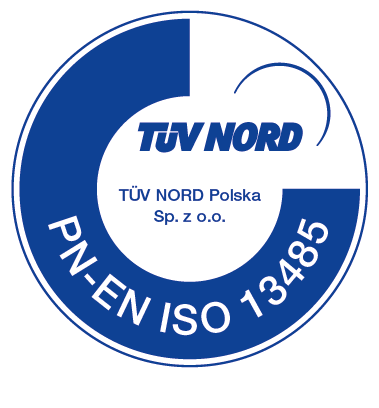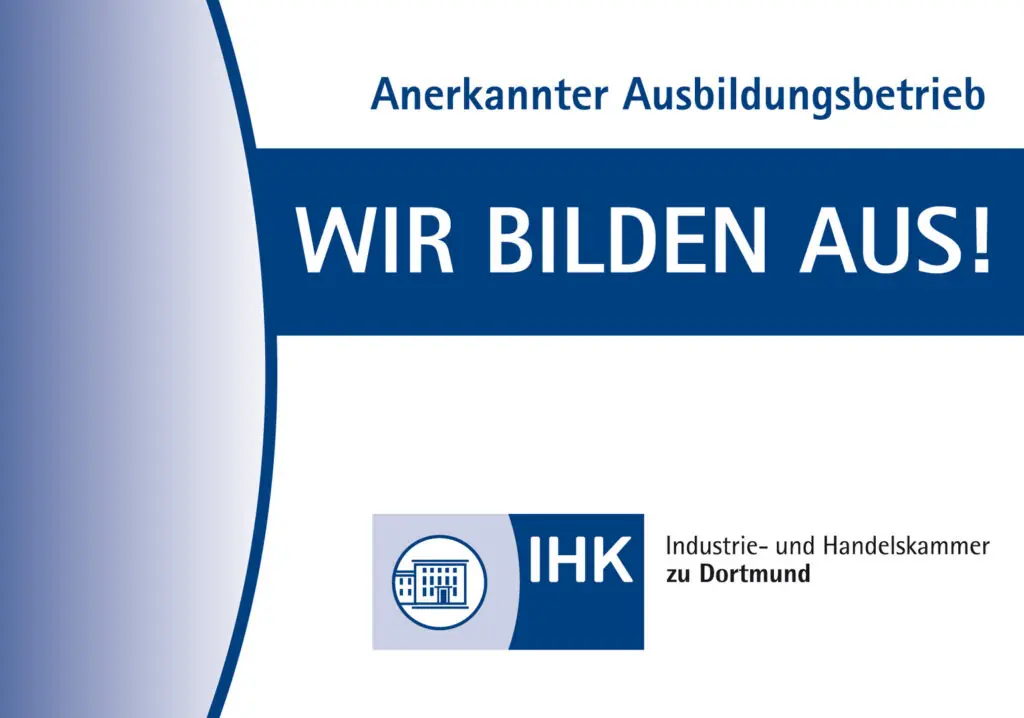Frequently Asked Questions
about Medical Devices
Medical Device Compliance & EU Market Access
Our Medical Device FAQ Page contains the most frequently asked questions about Regulatory Requirements, Quality Management Systems, ISO 13485 Compliance, CE Certification, In Vitro Diagnostic (IVD) Registration and more topics.

European Market
The purpose of a Medical Device is to diagnose, treat, monitor or alleviate Medical Conditions.
The EU system is decentralized and uses independent organizations called Notified Bodies to assess compliance. In contrast, the U.S. relies on a centralized FDA review process.
The CE Mark is a mandatory conformity mark that shows a Medical Device complies with EU safety, health and environmental protection standards.
A Notified Body reviews your technical documentation, audit your quality system and issue the necessary certificates for CE marking. WQS can act as your Notified Body.
Products range from simple items like bandages to complex technologies like heart implants – as long as they fulfill a medical purpose and meet the EU definition.
Not all. Class I Devices (low risk) can be self-certified by the manufacturer, while Class IIa, IIb, and III (higher risk) require involvement of a Notified Body for conformity assessment and CE Certification.
The Risk Class defines the level of risk associated with a Medical Device based on its intended use and the potential impact on patient safety. In the EU, Risk Classes range from Class I (low risk) to Class III (high risk), determined according to Annex VIII of the MDR.
The MDR defines the following classes:
Class I (with subcategories: Is, Im, Ir), Class Iia, Class Iib and Class III.
In-Vitro Diagnostics (IVDs) are classified separately into Classes A, B, C, and D.
The classification depends on factors such as the duration of use, invasiveness, the part of the body affected and whether the device is active or passive. The intended use, as defined by the manufacturer, is the key criterion for classification.
Examples include non-sterile wound dressings, manual wheelchairs and reusable surgical instruments (Ir). These devices have minimal risk when used correctly.
No. While both systems use Classes I, II, and III, the classification rules and requirements differ between the EU MDR and the U.S. FDA framework. A product’s class in the EU may not align directly with its FDA class.
CE Certification confirms that a Medical Device complies with all applicable EU regulations and standards, including the MDR (Regulation (EU) 2017/745). It is mandatory for legally placing a Medical Device on the European Market.
Yes, all Medical Devices intended for the EU Market must carry the CE Mark. The complexity of the certification process depends on the Device’s Risk Class.
You must prepare a complete Medical Device Master File, including a Risk Management File (per ISO 14971), evidence of conformity with the General Safety and Performance Requirements (Annex I MDR), and product-specific documentation for EUDAMED and DMIDS Registration.
The PRRC ensures compliance with MDR requirements within your organization. This role is mandatory for manufacturers and authorized representatives in the EU. Small and medium-sized enterprises may outsource this function to qualified external partners like WQS.
Logistics for Medical Devices and IVDs must comply with strict regulatory and quality standards (e.g., MDR, IVDR, ISO 13485, GDP). Unlike general logistics, medical device fulfillment requires controlled environments, traceability and documented procedures to ensure patient safety and product performance.
We offer various services, including:
• Ambient storage (15–25 °C) and cold chain storage (2–8 °C)
• Real-time environmental monitoring and alarm systems
• Calibrated temperature sensors and periodic mapping
• Segregated zones for quarantine, high-value, or hazardous goods
• Cleanroom-ready handling (where applicable) and pest control protocols
We provide batch/lot and serial number tracking, support UDI integration and monitor expiry dates using a validated WMS. Our systems offer real-time access and API/EDI integration with your ERP for end-to-end traceability.
Our reverse logistics services include:
• Returns inspection and triage
• Quarantine and NCMR handling
• Repackaging, relabeling, and re-sterilization
• Certified destruction and documentation for unsafe or expired goods
The Technical Documentation is a comprehensive set of documents that proves a Medical Device complies with the EU MDR’s General Safety and Performance Requirements (GSPR). It is mandatory for all medical devices – regardless of risk class – to obtain CE Marking and enter the European market.
- Product Description and Specifications
- Labeling and instructions for use
- Design and Manufacturing Information
- General Safety and Performance Requirements (GSPR)
- Risk-Benefit Analysis and Risk Management
- Verification and Validation
- Post-Market Surveillance
The structure and requirements for Technical Documentation are outlined in Annex II and Annex III of Regulation (EU) 2017/745 (MDR).
Yes. All Medical Devices – including Class I – must have complete and up-to-date Technical Documentation. However, the depth of documentation varies by Risk Class.
Instructions for Use (IFU) and labeling must comply with EN ISO 15223-1 and EN 1041 and include: indications, contraindications, warnings, sterilization instructions, UDI, CE mark and language requirements based on the target market.
The Risk Management File documents the entire risk management process, including the risk-benefit analysis, identified hazards, mitigation measures, and residual risks. It must be aligned with the product’s lifecycle and updated regularly.
Post-Market Surveillance (PMS) is a proactive and systematic process mandated by the EU MDR to monitor the safety, performance, and compliance of a Medical Device after it has been placed on the market. It involves gathering data from real-world use to detect risks early and take corrective or preventive actions.
Post-Market Clinical Follow-Up (PMCF) is an essential part of PMS that focuses on collecting clinical data after a device has entered the market. It confirms that the device remains safe and effective throughout its lifetime and identifies unknown side effects or deviations from intended use.
Yes, both PMS and PMCF are mandatory under the MDR for all risk classes – from Class I to Class III. The level of scrutiny and clinical follow-up increases with the device’s risk class.
A PMS Plan should outline methods for collecting, evaluating, and responding to post-market information. This includes feedback from users, adverse event reports, incident trends, scientific publications, registry data and updates to technical documentation.
PMCF activities can include post-market clinical studies, user surveys, patient registries, observational data analysis, and literature reviews – always under real-use conditions and within the device’s intended purpose.
PMS and PMCF are part of the lifecycle approach to regulatory compliance. Planning must begin before CE Marking, and both continue after market entry to maintain the validity of the CE Certification over time.
While PMS includes all forms of post-market data gathering, PMCF is specifically focused on clinical data collection and evaluation under real-world conditions to support the ongoing clinical evaluation.
Consulting
EN ISO 14971 is the harmonized standard under the MDR for Risk Management in Medical Devices. It outlines the systematic process manufacturers must follow to identify, evaluate, control and monitor risks throughout the product lifecycle. Compliance with this standard demonstrates conformity with EU safety and performance requirements.
Yes, according to Article 10 and Annex I Section 3 of the MDR, every Medical Device manufacturer must establish, document, implement and maintain a Risk Management System. This applies to all Device Classes, including Class I.
At minimum, the Risk Management File must include:
- Risk Management Process Description
- Risk Management Plan
- Risk Analysis (including Hazard Identification)
- Risk Management Report
The purpose of the Risk Management System is to identify and assess all hazardous situations that arise from the product or are associated with the product, as well as all reasonably foreseeable misuse of the Medical Device in question.
Risk Management is a critical part of the Technical Documentation needed for CE Marking. Without a properly documented and implemented Risk Management System, a Medical Device cannot lawfully be placed on the EU Market.
GSPRs are a comprehensive set of requirements outlined in Annex I of the MDR that ensure Medical Devices are safe, effective, and meet quality standards before being placed on the European market.
All Medical Devices, regardless of class (I, IIa, IIb, III), must comply with GSPRs. This includes everything from simple bandages to complex implantable devices and medical software.
The legal framework for GSPRs is established in Articles 5 and 10 of the MDR, supported by the detailed checklist in Annex I.
Compliance is demonstrated through a combination of documentation, testing and clinical evidence, culminating in the CE Mark, which indicates that the device meets all regulatory requirements.
GSPRs address a wide range of topics, including risk management, clinical evaluation, sterilization, materials of biological origin, software safety, radiation protection, metrology, labeling, and instructions for use.
GSPRs form the backbone of the conformity assessment process. Without meeting them, manufacturers cannot legally market their devices in the EU, making them essential for regulatory compliance and market access.
Yes, GSPRs include specific requirements for software, especially programmable medical systems and medical apps, ensuring their safety, reliability, and performance under normal conditions of use.
Clinical Data is information about a device’s safety or performance, including clinical trial results or scientific literature. Clinical Evaluation is the process of evaluation of this data for compliance with the requirements of the MDR. Performance Data refers specifically to how well the device achieves intended clinical benefit.
Yes, MEDDEV 2.7/1 Rev. 4 is still considered the most relevant guidance for Clinical Evaluation under MDR. While it predates MDR, it remains widely used and is referenced in MDCG documents for structuring evaluations and reports.
A Clinical Evaluation includes a Clinical Evaluation Plan (CEP) and Clinical Evaluation Report (CER). These documents outline the scope, intended purpose, clinical development plan, equivalence assessment, literature review, data analysis and final conclusions on safety and performance.
Start by assessing the availability of Clinical Data, defining the intended purpose and claims of your device, and determining whether a clinical investigation is needed. WQS can guide you through each step and provide a tailored, non-binding quote.
The fundamental difference in the mode of action. a Medical Device achieves its primary intended effect typically by physical or mechanical action. In contrast, a Pharmaceutical is defined as a substance or preparation intended to exert its effect pharmacologically, immunologically or metabolically to treat or prevent disease.
Many products serve similar purposes (e.g. treatment or prevention of disease), but their mechanisms of action can overlap or be unclear, making classification complex—especially for borderline products.
The intended purpose defines how the product is supposed to work. If the primary effect is not achieved pharmacologically, immunologically or metabolically, it may be classified as a Medical Device.
Yes, so-called combination products exist. However, one mode of action must be considered primary, which determines the regulatory path (either under MDR or Pharmaceutical Law).
Yes. Key references include the “Manual on Borderline and Classification” from the EU Commission and the “Classification of Medical Devices” guidance by the AGMP Working Group. You can also contact us for support with your Classification Analyses.
A QMS ensures that Medical Devices consistently meet safety, performance, and regulatory requirements. It is legally required under the European MDR and helps protect patients, users, and healthcare providers. Learn more about the QMS ISO 13485 Compliance.
No, Class I Medical Devices generally do not require Notified Body involvement, but the manufacturer must still implement and maintain a QMS in accordance with MDR requirements.
The QMS must cover Regulatory Compliance, Risk Management, Product Realization, Clinical Evaluation, Post-Market Surveillance, UDI Assignment, Vigilance Reporting and Continuous Improvement.
No, ISO 13485 certification is not legally required for CE Marking under the MDR. However, it is strongly recommended and widely used by Notified Bodies as supporting evidence in the conformity assessment process.
ISO 13485 provides a structured framework for implementing a Quality Management System (QMS) specific to medical devices, ensuring consistent product quality, safety and regulatory compliance throughout the product lifecycle.
No, ISO 13485 certification is not legally required for CE Marking under the MDR. However, it is strongly recommended and widely used by Notified Bodies as supporting evidence in the conformity assessment process.
Key components include documented procedures, quality objectives, a quality manual, personnel training, supplier evaluation, complaint handling, risk management, traceability and internal audits.
WQS offers end-to-end support including gap assessments, QMS design and documentation, internal audits, training, and coordination with Notified Bodies. We tailor our services to your size, structure and product risk class.
Cleaning validation ensures that the Medical Device is free from unacceptable levels of contamination that could pose a risk to patients or impair device function. It is required under Annex I of the MDR, which outlines Essential Safety and Performance Requirements.
Relevant standards include VDI 2083 Part 21 and DIN/TS standards and in the special case of implants also ISO 19227.
Revalidation is required periodically, based on a risk-based interval.
Yes. External specialist labs (such as ours) can perform pre-tests, full validations and ongoing monitoring in compliance with MDR requirements. However, the manufacturer retains responsibility for compliance and documentation.
Medical Software is classified under Annex VIII, Rule 11 of the MDR. Software that provides information used for diagnostic or therapeutic decisions is generally classified as Class IIa, IIb or III, depending on the risk.
Validation ensures that your software reliably meets its intended use. It includes defining requirements, risk assessment, and performing tests (IQ/OQ/PQ). This applies to software embedded in devices, used in manufacturing, or in the QMS.
Yes. Software that affects product quality (e.g., testing, inspection, monitoring systems) must be validated to demonstrate that it does not compromise safety or performance.
• IQ (Installation Qualification) – Ensures software is installed correctly in its intended environment.
• OQ (Operational Qualification) – Verifies the software performs its intended functions under simulated conditions.
• PQ (Performance Qualification) – Confirms that the software consistently performs in real-world usage.
Unlike the U.S., the EU categorizes IVDs into four risk classes (A, B, C, D). The EU IVDR (Regulation 2017/746) includes stricter classification rules, performance evaluation requirements and involves Notified Bodies for most products above Class A.
No. Only Class B, C, and D IVDs require review and certification by a Notified Body. Class A IVDs (non-sterile) can be self-certified by the manufacturer.
You need full Technical Documentation in accordance with Annexes II and III of IVDR, including device description, performance evaluation, design and manufacturing information and risk management data.
Yes. If your IVD has already demonstrated clinical performance in the U.S., the data can often be used as part of the EU performance evaluation, provided it meets EU evidence standards.
WQS provides full-service support including Classification, preparation of Technical Documentation, Clinical Evaluation Planning and assistance with EUDAMED Registration.
Need more information?
WQS provides you with detailed information on your subject.
For any further questions or individual consulting, feel free to contact us directly.



